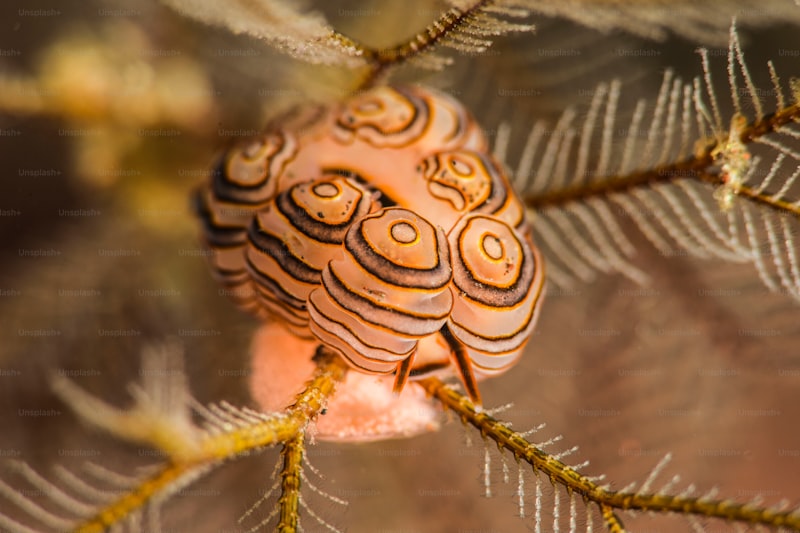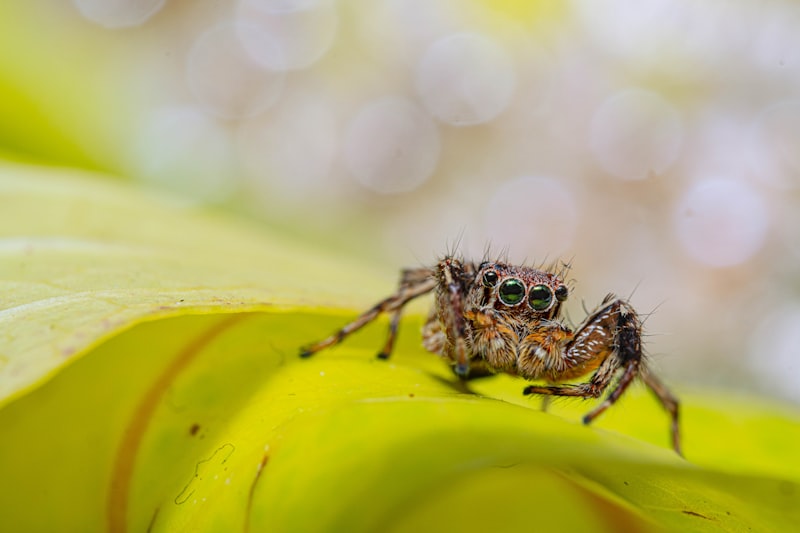Imagine exploring the depths of a rainforest or the untouched corners of the ocean floor, where nature’s mysteries thrive in unexpected forms. Among these treasures are rare invertebrate species, often overlooked but crucial to ecosystems worldwide. These hidden gems of the animal kingdom encompass a fascinating array of creatures, from delicate sea slugs to elusive insects found only in remote jungles.
Invertebrates, lacking a backbone, are incredibly diverse yet often face the threat of extinction due to habitat loss and climate change. Their significance lies not only in their unique biology but also in their roles within ecosystems. For instance, certain invertebrates act as crucial pollinators, ensuring the reproduction of plant species essential for other wildlife and human agriculture.
The hunt for these rare species often resembles a scientific adventure, where researchers brave challenging terrains and environments to uncover new discoveries. Each find brings with it a wealth of knowledge about evolution, adaptation, and the interconnectedness of life on Earth. Conservation efforts play a pivotal role in safeguarding these species, with initiatives focused on preserving habitats and raising awareness about their ecological importance.
From the depths of the ocean to the heights of mountain ranges, rare invertebrate species continue to surprise and inspire scientists and nature enthusiasts alike. Their unique adaptations and survival strategies underscore the resilience of life forms in even the most extreme conditions. As we delve deeper into understanding these hidden gems, we gain insights that may hold the key to addressing broader environmental challenges facing our planet today.
Exploring the world of rare invertebrate species is not just a scientific endeavor but a journey of wonder and discovery. Each species uncovered adds another chapter to the ongoing story of biodiversity, reminding us of the vast complexity and beauty of the natural world.
Unveiling the Secret World: Rare Invertebrate Species That Defy Imagination
Imagine a world where creatures exist that seem straight out of a science fiction novel. We’re not talking about aliens from outer space, but rather, the fascinating and often bizarre world of rare invertebrate species. These incredible creatures, hidden away in the depths of our oceans or secluded in remote rainforests, challenge our understanding of life on Earth.
Take, for instance, the Glaucus atlanticus, also known as the blue dragon. Despite its small size, this sea slug is a marvel of evolutionary adaptation. With its striking blue coloration and ability to float on the ocean surface, the blue dragon resembles a creature from a mythical tale rather than a real-life organism. It even preys on dangerous Portuguese man o’ wars, storing their venomous stingers for its own defense.
Venture into the dark, cavernous depths of the Mariana Trench, and you might encounter the anglerfish. This deep-sea dweller is notorious for its bioluminescent lure, dangling from its head like a fishing rod to attract unsuspecting prey. The anglerfish’s appearance and hunting strategy are so otherworldly that it has inspired legends and myths for centuries.
In the lush rainforests of Southeast Asia, another extraordinary invertebrate thrives: the orchid mantis. This master of disguise mimics orchid flowers with such precision that it can lure insects right into its grasp. Its delicate, petal-like appearance and slow, swaying movements make it virtually indistinguishable from a real orchid, demonstrating nature’s incredible ability to blend artistry with survival.
But perhaps the most astonishing of all is the Pompeii worm, found near hydrothermal vents deep in the Pacific Ocean. Enduring temperatures close to boiling, this extremophile not only survives but thrives in one of the harshest environments on Earth. Its bright red plumes are a stark contrast to the dark, hostile waters it calls home, underscoring the resilience and adaptability of life in even the most inhospitable conditions.
These rare invertebrate species remind us that our planet is still filled with mysteries waiting to be uncovered. From the depths of the oceans to the heights of remote mountaintops, these creatures defy imagination and challenge our perception of what life can be. As scientists continue to explore and discover new species, who knows what other marvels of nature are yet to be found?
Hidden Treasures: Exploring the Fascinating Lives of Rare Invertebrate Species
Imagine stumbling upon a tiny cave, only to find it inhabited by the elusive velvet worm, with its soft, worm-like body and peculiar hunting techniques. This ancient creature, resembling a relic from prehistoric times, uses sticky slime to immobilize its prey—a method as effective today as it was millions of years ago.
In the lush rainforests of South America, the orchid mantis awaits, its delicate appearance belying its prowess as a master of camouflage. Resembling a flower petal in both shape and color, this cunning predator attracts unsuspecting prey, showcasing nature’s ingenuity in blending in while standing out.
Venture into the depths of the ocean where the mimic octopus reigns supreme. With its ability to mimic over fifteen different species, from lionfish to sea snakes, this cephalopod embodies adaptability and survival. Its shape-shifting abilities not only confuse predators but also astound researchers studying its behavior.
In Australia’s remote deserts, the peacock spider dances its intricate courtship ritual, adorned with vibrant colors and ornate patterns. This tiny arachnid, no bigger than a fingernail, uses its mesmerizing display to woo potential mates—a reminder that beauty and complexity thrive even in the harshest environments.
These stories of rare invertebrate species unveil a world where evolution has sculpted creatures into living marvels of resilience and diversity. Each discovery sparks wonder and raises questions about our own place in the intricate web of life on Earth. As we continue to explore and protect these hidden treasures, we deepen our understanding of biodiversity and the interconnectedness of all living beings.
Beyond the Ordinary: Rare Invertebrate Species That Challenge Our Perception of Life
Imagine the elusive Velvet Worm, an ancient creature that predates dinosaurs. With its soft, velvety body and primitive eyes, it roams the rainforests of Central and South America, capturing prey with a sticky slime that paralyzes its victims. Its existence is a testament to resilience and adaptation over millions of years.
Venture into the caves of Slovenia, and you might encounter the Olm, a blind salamander that can live up to a century. This ghostly amphibian navigates through darkness using its highly sensitive skin and unique sensory abilities. It serves as a reminder of how life can thrive in the most inhospitable environments.
On the ocean floor, the Dumbo Octopus gracefully flaps its ear-like fins, resembling a character from a whimsical tale. Found thousands of meters beneath the surface, this deep-sea dweller embodies grace and mystery, adapting to extreme pressure and scarcity of light with astonishing ease.
Back on land, the Goliath Birdeater Tarantula commands attention not just for its size, but for its audacity in preying on birds and small mammals. Found in the rainforests of South America, this giant arachnid challenges our fear and fascination, existing as a testament to the biodiversity of our planet.
These rare invertebrates are more than just biological curiosities; they are windows into evolutionary marvels and ecological resilience. They remind us that life, in all its forms, finds a way to flourish even in the most unexpected corners of our world. As we uncover more about these creatures, we deepen our understanding of the intricate web of life that sustains us all.
Nature’s Marvels: The Incredible Diversity of Rare Invertebrate Species Revealed
Have you ever wondered about the hidden treasures that lie within the depths of our planet? From the deepest oceans to the highest mountains, nature never fails to surprise us with its vast array of life forms. One of the most fascinating aspects of this biodiversity is the rare invertebrate species that inhabit various ecosystems around the world.

Imagine a world where tiny creatures wield incredible powers of survival and adaptation, yet they remain largely unseen by human eyes. These rare invertebrates, often overlooked in favor of more charismatic species, play crucial roles in their ecosystems. They might be as small as a pinhead or as strange as a creature from another planet, yet each one contributes uniquely to the balance of nature.
Take, for instance, the velvet worm, a creature resembling a hybrid between a caterpillar and a slug. Found in tropical forests, these ancient invertebrates use a sticky slime to capture prey, showcasing a predatory technique that has survived for millions of years.
Or consider the tardigrade, often dubbed the “water bear,” known for its incredible resilience to extreme conditions. These microscopic creatures can survive in boiling water, the vacuum of space, and even the harsh radiation of nuclear fallout. Their ability to enter a state of suspended animation, called cryptobiosis, allows them to endure environments that would instantly kill most other forms of life.
In the depths of the ocean, hydrothermal vent communities harbor creatures like the yeti crab, a furry crustacean that cultivates bacteria on its claws to feed. These strange adaptations to extreme environments highlight the ingenuity of evolution in creating life forms that defy conventional expectations.
As we uncover more about these rare invertebrates, we begin to appreciate the intricate web of life that supports our planet. Each species, no matter how small or unusual, contributes to the resilience and diversity of ecosystems worldwide. They remind us of nature’s boundless creativity and the ongoing mysteries waiting to be discovered beneath the surface of our world.
Guardians of Biodiversity: Preserving the Legacy of Rare Invertebrate Species
Imagine a world where tiny creatures play a crucial role in maintaining the delicate balance of our ecosystems. These unsung heroes, the rare invertebrate species, are the guardians of biodiversity, quietly contributing to the health of our planet.
Invertebrates encompass a vast array of animals without a backbone, from insects like butterflies and beetles to marine organisms such as corals and mollusks. Despite their small size, they wield significant ecological power. For instance, bees are vital pollinators, essential for the reproduction of flowering plants and agricultural crops that sustain our food supply.
The challenge lies in their rarity. Many invertebrate species face threats ranging from habitat loss to climate change and pollution. As these pressures mount, conservation efforts become increasingly urgent. Organizations and researchers worldwide are dedicating their efforts to safeguarding these fragile populations.
Conservation strategies often involve habitat restoration, creating protected areas, and implementing sustainable practices. For example, restoring wetlands not only benefits local communities but also provides critical habitats for diverse aquatic invertebrates.
Moreover, public awareness plays a crucial role. Educating communities about the importance of invertebrates can inspire collective action in conservation. After all, these small creatures, often overlooked, are integral to the web of life that supports human existence.
Under the Microscope: Delving into the Mysteries of Rare Invertebrate Species
Imagine a world where tiny creatures hold secrets as profound as the depths of the ocean. In the realm of biology, rare invertebrate species are like elusive gems waiting to be discovered. These creatures, devoid of backbones yet rich in complexity, captivate scientists and nature enthusiasts alike with their unique adaptations and mysterious behaviors.
One such marvel is the velvet worm, a creature that seems to bridge the gap between insects and worms. With its soft, velvety appearance and slime-spewing capabilities, it navigates the forest floors of tropical regions with a stealth that belies its small size. Scientists are fascinated by its hunting techniques and its ability to immobilize prey swiftly, offering insights into evolutionary strategies developed over millions of years.
Moving to the depths of the ocean, we encounter the dumbo octopus, named for its ear-like fins that resemble the famous Disney character. Found in the abyssal plains of the world’s oceans, this rare invertebrate gracefully glides through the water, its transparent skin shimmering with iridescence. Its unique morphology allows it to thrive in environments where few other creatures can, reminding us of the boundless diversity hidden beneath the waves.
On land, the tardigrade, or water bear, emerges as a true survivor. Known for its resilience to extreme conditions such as radiation and the vacuum of space, this microscopic creature embodies the adage “small but mighty.” Its ability to enter a state of cryptobiosis, where metabolic processes almost cease, enables it to endure environments that would be fatal to most other life forms.
These examples barely scratch the surface of the intricate world of rare invertebrate species. Each one, from the elusive velvet worm to the resilient tardigrade, offers a glimpse into the wonders of evolution and adaptation. As scientists continue to uncover new species and delve deeper into their behaviors and habitats, the mysteries of these remarkable creatures only deepen, leaving us in awe of the complexity and diversity of life on Earth.
Ecological Marvels: Rare Invertebrate Species and Their Vital Role in Ecosystems
Ever wondered about the tiny creatures that play a massive role in our ecosystems? Let’s dive into the world of rare invertebrate species, those unsung heroes of biodiversity.

In the vast tapestry of Earth’s ecosystems, rare invertebrate species weave a crucial thread. Despite their size, these organisms wield immense ecological importance. From the mysterious depths of the ocean to the lush forests and even our own backyard gardens, they silently support the balance of life.
What exactly are rare invertebrates? They are animals without backbones, ranging from microscopic organisms to larger creatures like beetles and butterflies. Often overshadowed by charismatic megafauna, these small wonders contribute uniquely to their habitats. Think of them as the architects and caretakers of their ecosystems, performing vital roles such as pollination, decomposition, and nutrient cycling.
Take, for instance, the enigmatic velvet worm. Resembling a cross between a caterpillar and a worm, these soft-bodied creatures are living fossils, dating back over 500 million years. Found in humid forests, they play a crucial role in maintaining soil health by breaking down organic matter. Without them, the nutrient cycle would be disrupted, affecting the entire ecosystem.
Or consider the dazzling blue morpho butterfly, known for its iridescent wings that capture sunlight like a prism. Beyond its beauty, this butterfly is a key pollinator in Central and South American rainforests, ensuring the reproduction of countless plant species. Its delicate dance from flower to flower supports the web of life that sustains the forest.
Why should we care about these tiny marvels? Because they are indicators of ecosystem health. Their presence or absence can signal changes in environmental conditions long before humans notice. By protecting them, we safeguard the resilience of our planet’s natural systems against threats like habitat loss and climate change.
Next time you encounter a spider spinning its web or a beetle scuttling through leaves, remember they are not just pests or nuisances. They are ecological marvels, playing roles that sustain life as we know it. Each rare invertebrate species is a testament to the intricate beauty and functionality of nature, deserving of our awe and protection.
Frequently Asked Questions
How can I identify rare invertebrate species in my area?
Learn how to identify rare invertebrate species in your area with our concise guide. Discover key features, habitats, and observation tips that will help you recognize these unique creatures in the wild.
How can I contribute to research on rare invertebrate species?
Learn how to contribute to research on rare invertebrate species by participating in citizen science projects, documenting sightings with photographs and detailed observations, sharing data with relevant research organizations, and supporting conservation efforts in their habitats.
What conservation efforts are in place to protect rare invertebrate species?
Learn about the ongoing conservation efforts aimed at protecting rare invertebrate species, ensuring their survival through habitat preservation, captive breeding programs, and collaborative research initiatives.
What are rare invertebrate species and why are they important?
Learn about rare invertebrate species and their significance in ecosystems. Discover why these creatures, often overlooked, play crucial roles in maintaining biodiversity and ecosystem balance. Explore their unique adaptations and the challenges they face in today’s changing environment.
Where are the best places to find rare invertebrate species?
Discover the top locations worldwide for finding rare invertebrate species with our concise guide. Learn where to explore to encounter unique and elusive creatures.


